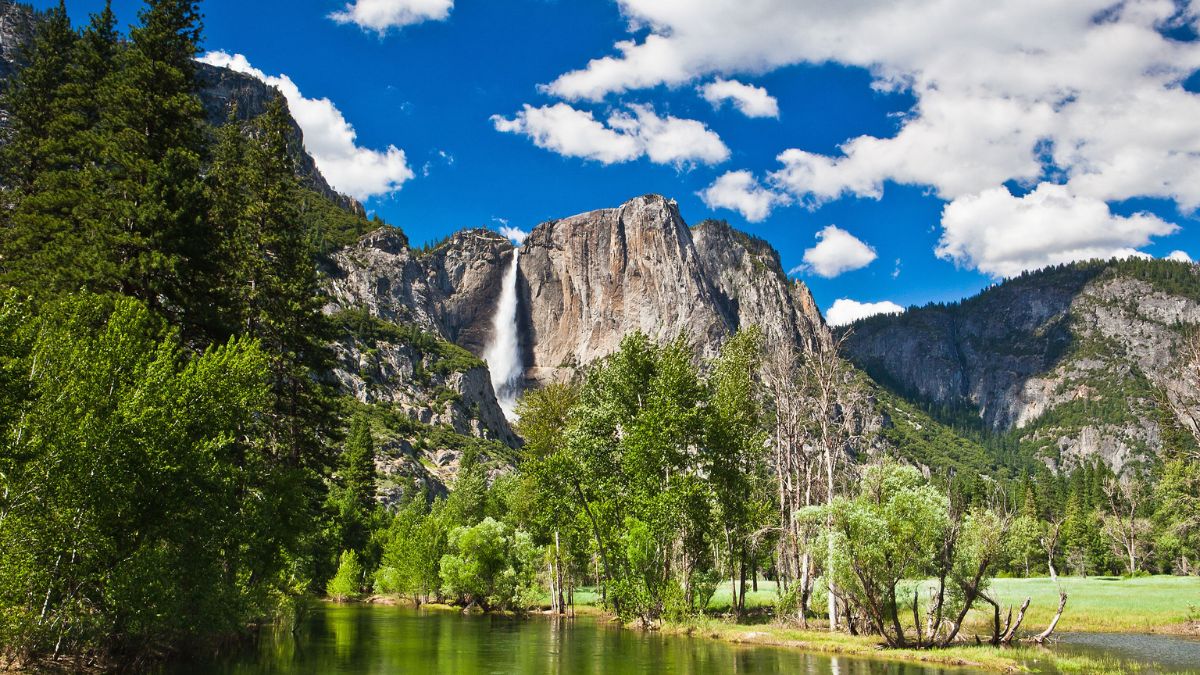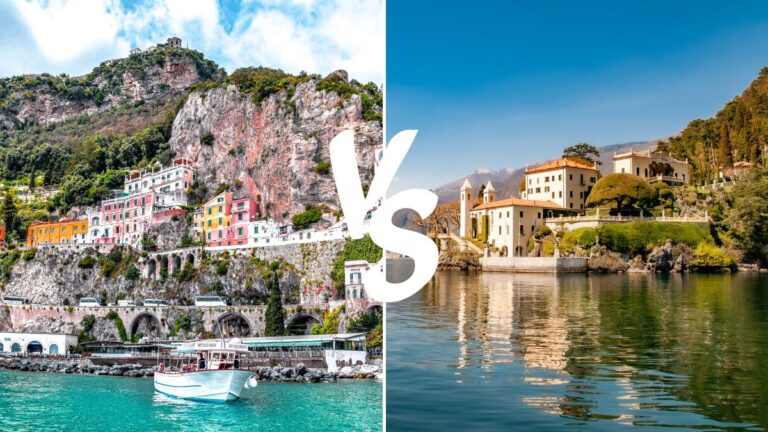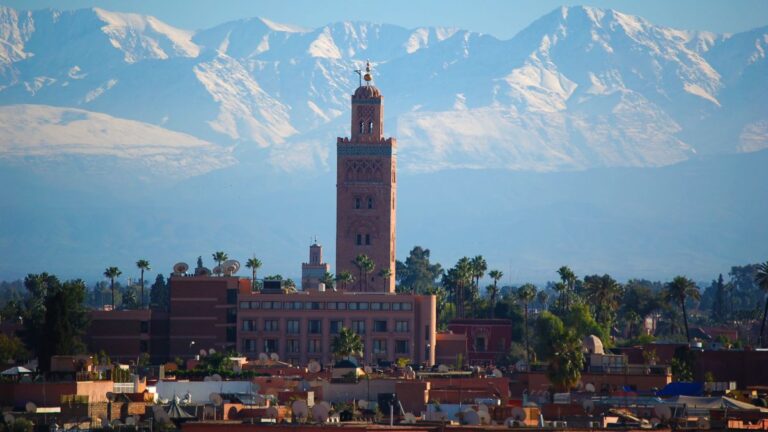Worst Time to Visit Yosemite: Dealing with Wildfire Threats and Summer Tourist Crowds

As participants in Amazon Associates and other programs, we earn from qualifying purchases. This comes at no additional cost to you. For more details, see our Affiliate Disclosure.
Yosemite is one of those magical places that many of us dream of visiting. But like all popular destinations, there are times when it’s better to stay away. Between the dangers of wildfires and the huge summer crowds, there are moments when the park isn’t at its best. This article will help you understand when those times are, so you can plan a safer, more enjoyable trip.
HIGHLIGHTS
- Yosemite faces significant challenges during the summer due to over-tourism and the wildfire season, which can pose risks to visitors and impact the park’s natural beauty.
- Late spring, early fall, and winter are alternative times to visit for a more peaceful experience, offering unique perspectives of the park’s landscapes.
Understanding Wildfire Season in Yosemite
Yosemite National Park, with its majestic waterfalls, vast meadows, and towering granite cliffs, is an undeniable gem of the American wilderness. However, like many parts of California, it is susceptible to wildfires. These fires, while a natural part of the ecosystem, can pose risks to visitors and often lead to temporary closures of certain areas of the park.
How Wildfires Start: Most wildfires in the region are caused by a combination of dry conditions, hot temperatures, and sometimes human activities, like unattended campfires or discarded cigarette butts. Lightning strikes from summer thunderstorms can also ignite fires.
Nature’s Role: Believe it or not, fires play an essential role in Yosemite’s ecosystem. They help clear out dead vegetation, allowing for new growth. Some plants even need fire to help them reproduce. However, when fires get too large or burn in areas close to park infrastructure or populated places, they can become hazardous.
Being Prepared: If you’re planning a trip to Yosemite during wildfire season, it’s crucial to stay updated on current conditions. The park’s official website and local news outlets provide regular updates. Keep in mind that air quality can vary, so if you have respiratory issues, be extra cautious.
Remember, while the threat of wildfires can seem daunting, with the right knowledge and preparation, you can still have a memorable and safe visit to Yosemite.
The Summer Surge: What to Expect from Tourist Crowds
Yosemite’s breathtaking beauty is no secret. Come summer, the park transforms into a hotspot for tourists from around the world, eager to witness its splendors in the warm, sunny weather. But what does this influx mean for you as a potential visitor? Let’s dive into what you can expect during the summer months.
Peak Times: Typically, July and August are the busiest months at Yosemite. Schools are out, and families embark on their annual vacations, making it a bustling time in the park. Key attractions like Yosemite Valley, Glacier Point, and Mariposa Grove often see the most visitors.
Traffic Woes: With more people come more cars. Expect longer waiting times at park entrances, especially during weekends. Inside the park, parking can be scarce, and there’s often congestion on popular roads.
Accommodations and Facilities: Camping sites, lodges, and other accommodations in or near Yosemite can get fully booked months in advance during the summer. The same goes for restaurants and other facilities; you might find yourself waiting in line for basic services more often than you’d like.
Making the Most of It: Despite the crowds, summer in Yosemite has its charms. The key is to plan ahead. Consider visiting less popular areas of the park or starting your day early to beat the rush.
Remember, everyone is there for the same reason: to marvel at nature’s wonders. With a bit of patience and preparation, you can navigate the summer surge and enjoy all that Yosemite has to offer.
Safety First: Risks of Visiting During Wildfire Threats
The allure of Yosemite is undeniable, but during wildfire season, there are some genuine risks to consider.
Wildfires can spread rapidly, making certain areas of the park inaccessible or dangerous. While officials work diligently to monitor and control these fires, the situation can change in mere hours, leading to unexpected road or trail closures.
Smoke from wildfires can significantly impact air quality. This not only obscures the park’s stunning views but can also pose health risks, especially for children, the elderly, and those with respiratory issues.
In addition, emergency resources during a wildfire are stretched thin. If an evacuation is ordered, routes can become congested, and exits might be slower than anticipated.
Lastly, while Yosemite staff and firefighters are trained to handle these situations, it’s essential for visitors to stay informed and act responsibly. This means following any guidelines or warnings given by park officials, and always prioritizing safety over adventure.
Navigating Yosemite: Tips to Avoid the Summer Rush
Yosemite’s enchanting landscapes make it a must-visit for many, but the summer months can bring a flood of visitors. To help you enjoy the park without getting overwhelmed by the crowds, here are some handy tips to keep in mind.
- Visit During Off-Peak Times: Instead of heading to Yosemite in July or August, consider going in late spring or early fall. The weather is still pleasant, and the crowds are fewer.
- Start Early or Stay Late: One of the simplest ways to beat the crowds is to start your day at dawn. Not only will you have a quieter experience, but the early morning light in Yosemite is truly magical. Alternatively, consider activities during the late afternoon or evening when many tourists are winding down.
- Explore Lesser-Known Areas: Everyone wants to see El Capitan and Half Dome, but Yosemite has many hidden gems. Areas like Hetch Hetchy or the park’s northern regions offer stunning views with fewer visitors.
- Use Park Shuttles: Take advantage of Yosemite’s free shuttle buses. They’re an eco-friendly way to travel and help you avoid the hassle of finding parking.
- Book Accommodations Early: If you’re planning to stay inside the park, book your accommodations well in advance. This ensures you have a place to rest without venturing far after a long day of exploring.
- Stay Updated: Use the park’s official website or visitor centers to stay informed about current conditions, special events, or any temporary closures. This will help you plan your activities better and avoid any surprises.
With a little foresight and planning, you can navigate Yosemite like a pro, even during its busiest months. The park’s natural wonders await, ready to be explored at your own pace.
Alternative Times to Visit for a Peaceful Experience
When most people think of Yosemite, they imagine summer hikes, sunlit meadows, and family picnics. While summer is undoubtedly a beautiful time to visit, it’s also the busiest. If you’re looking for a more serene and intimate connection with nature, consider exploring Yosemite during the alternative times mentioned below.
Late Spring: Just before the summer rush, late spring offers blooming wildflowers and cascading waterfalls at their peak. While there might still be some snow at higher elevations, the valley itself is accessible and vibrant.
Early Fall: As summer fades, the autumn months usher in a quieter time in Yosemite. The trees begin their colorful transformation, and the cooler temperatures are perfect for hiking. Plus, you’ll encounter fewer mosquitoes than in the summer!
Winter: For a truly magical experience, Yosemite in the winter is a wonderland. Snow blankets the landscapes, transforming the park into a quiet paradise. Activities like snowshoeing, skiing, or simply enjoying the snowy vistas from the valley can be breathtaking. Do note that certain areas might be inaccessible due to snow, and you’ll need to be prepared for winter driving conditions.
Late Fall to Early Spring Weekdays: If your schedule allows, visiting on weekdays during the late fall to early spring can be ideal. Not only are there fewer visitors in general, but weekdays see even lower numbers, giving you plenty of space to enjoy Yosemite’s beauty in peace.
Opting for these alternative times provides a unique perspective of Yosemite, allowing you to experience its changing moods and colors without the bustling crowds. Each season has its charm, ensuring a memorable trip regardless of when you choose to visit.
Protecting the Park: How Over-Tourism and Wildfires Impact Yosemite
Yosemite, a national treasure, faces significant challenges due to both over-tourism and wildfires. Understanding these impacts is crucial for visitors, as our collective actions directly affect the park’s future.
Over-tourism puts a strain on Yosemite’s natural resources. Well-trodden paths suffer erosion, leading to habitat disruption. High volumes of traffic contribute to air pollution, detracting from the pristine wilderness experience.
The large crowds also strain the park’s facilities. Waste management becomes a concern, and litter, if not properly disposed of, can harm the local wildlife and mar the park’s beauty.
Wildfires, on the other hand, are a natural part of Yosemite’s ecosystem. They clear out dead vegetation and promote new growth. However, increasing human activity near and within the park raises the chances of preventable fires, which can devastate vast areas.
Air quality suffers during wildfire season. The smoke not only obscures views but also presents health risks for visitors, especially those with respiratory conditions.
Ultimately, the park’s future rests in our hands. By being informed, respectful visitors, we can help ensure Yosemite remains a haven for generations to come.






